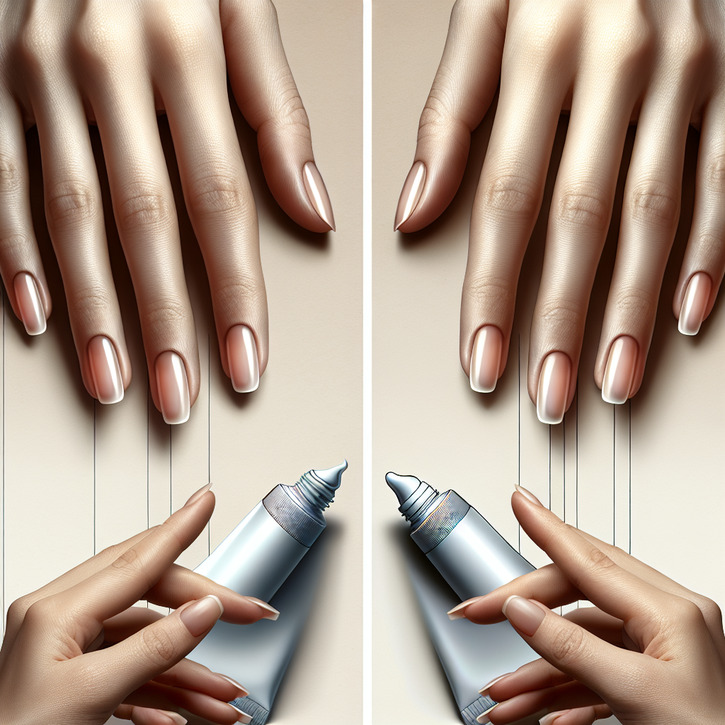How to Get Rid of Fingernail Fungus for Good

Getting to Know Finger Nail Fungus: A Friendly Guide
So, What Exactly Is Finger Nail Fungus?
Imagine tiny unwelcome guests invading your nail bed and surrounding skin—that’s finger nail fungus, also known as onychomycosis. It’s more common than you might think and can show itself in a variety of ways: nails turning discolored, becoming unusually thick, or even starting to crumble away. Sometimes, you might spot what looks like a bit of debris hidden under the nail, which not only looks odd but can also cause discomfort. While many brush it off as just a cosmetic flaw, the truth is that this fungal infection loves cozy, moist spots to flourish. Spotting it early is key because understanding what’s happening under your nails sets you on the path to stopping it in its tracks.
Spotting the Signs and Symptoms
At first, the signs of finger nail fungus can be pretty subtle—a slight color change or a bit of thickening might be all you notice. But as time goes on, things can get a bit more obvious: your nail might become brittle, start detaching from the nail bed, or develop a ragged, crumbly edge. In some cases, you might even catch a whiff of something unpleasant signaling a deeper infection. Keeping an eye on these little changes is important because what starts as a mild issue can quickly lead to more serious discomfort or even allow the fungus to spread further. A regular once-over of your nails might just save you a lot of hassle down the road.
Why Catching It Early Really Does Make a Difference
Getting a jump on finger nail fungus is crucial. The sooner you spot it, the simpler your treatment can be—a little early intervention goes a long way. In the early stages, treatments tend to be less invasive and can often be managed comfortably at home or with just a bit of professional help. Early action doesn’t just stop the fungus from getting worse; it also helps prevent it from jumping from one nail to another or even affecting your skin. Keeping a routine check and acting fast can save you both the embarrassment and the extra hassle of a long, drawn-out recovery.
Digging into the Causes and How It’s Diagnosed
How Your Environment and Lifestyle Play a Role
Believe it or not, your everyday habits and surroundings can heavily influence the likelihood of developing finger nail fungus. If you’re constantly in moist environments—think long hours of washing up, swimming, or simply living in a humid climate—you’re giving fungi the perfect chance to set up shop. Whether it’s skipping proper nail hygiene, using communal facilities without any extra protection, or not letting your nails get some air, these little things can add up. Certain jobs that involve regular exposure to water or chemicals can bump up the risk even more. Knowing these risk factors means you can take simple, proactive steps like using gloves or thoroughly drying your hands to keep the fungus at bay.
How Doctors Figure It Out
When you notice something off with your nails, the first step is usually a good old-fashioned visual check by your doctor. Often, they’ll take a small scraping or clip of your nail to send off for lab tests. These tests—ranging from microscopic examinations to culture tests—help pinpoint exactly which type of fungus is causing the trouble. In a few stubborn cases, a biopsy might be necessary to get a clear picture. This detailed diagnostic process ensures you get a treatment plan that’s just right for your situation, building trust and fostering a more personalized approach to your care.
Nurturing Your Nails Naturally: Home Remedies and More
DIY Antifungal Treatments You Can Try at Home
For many folks, reaching for natural remedies is the first course of action against finger nail fungus. Simple tricks like soaking the affected nail in a diluted apple cider vinegar bath, or applying tea tree oil straight on, have earned a lot of praise in household lore. These methods work by creating an environment that simply isn’t friendly to the fungus, slowly putting a brake on its rapid spread. Sure, they might take a bit longer than prescription options, but with steady, consistent use, you could start to see improvements over time. Pairing these methods with solid nail hygiene can be a game-changer when you’re dealing with those early signs of infection.
The Appeal of Essential Oils and Herbal Help
More and more people are turning to the world of essential oils and herbs to battle finger nail fungus. Oils like tea tree, lavender, and oregano aren’t just for making your home smell nice—they pack natural antifungal punch that can help choke off fungal growth when applied regularly. By diluting these oils and massaging them onto your nails, you allow their active ingredients to really get to work. On top of that, herbal extracts—like garlic or turmeric—offer added anti-inflammatory and antimicrobial benefits. While they might not always replace stronger medications, many appreciate their gentle yet effective role in enhancing overall nail health.
Eating Right for Healthier Nails
Believe it or not, what you eat can have a big impact on your nail health. Adjusting your diet to include more of the vitamins and minerals that boost nail strength—think vitamin E, biotin, and zinc—can help your body naturally fend off fungal invaders. Loading up on fruits and veggies rich in antioxidants is another great strategy, as these nutrients help your immune system kick pathogens to the curb. Don’t forget to keep hydrated and cut back on sugary, processed foods, which can create a more fungus-friendly environment. By making these mindful dietary tweaks, you empower your body to build a firmer defense against infections while giving your nails the love they deserve.
The Medical Side: Treatments That Really Work
Over-the-Counter Solutions for Those Early Battles
When the early signs of finger nail fungus start to make an appearance, many people turn to over-the-counter antifungal treatments. Available in creams, ointments, or even nail lacquers, these products help slow fungal growth, especially in milder cases. The trick is to stick with them consistently, following the product instructions to see real progress. For plenty of individuals, these accessible treatments serve as a solid first step—especially if you’re not ready to dive into prescription medications or more invasive procedures.
Going Prescription: When the Fungus Just Won't Budge
Sometimes, over-the-counter options just don’t cut it. In these stubborn cases, your doctor might prescribe stronger antifungal medications, available in both oral and topical forms. These meds are designed to work their way deep into the nail bed, attacking the fungus directly. While oral medications can come with some side effects, their targeted approach can make a big difference in knocking out a persistent infection. Working closely with your healthcare provider ensures that the treatment plan is tailored to your needs, balancing power and safety for the best possible results.
High-Tech Treatments: Laser Therapy and Surgery
When finger nail fungus refuses to back down, advanced treatments like laser therapy or even surgical removal might be on the table. Laser treatments use intense light to hit the fungus right at its source, disrupting its cellular structure to encourage healthier nail growth. In particularly tough cases, a doctor might suggest surgically removing the nail to completely clear out the infection and pave the way for a fresh, healthy nail. These options often require a bigger commitment in terms of cost and recovery time, but for many, they represent a modern solution when all else fails. Of course, such approaches should only be considered under careful medical supervision.
Keeping the Fungus at Bay: Prevention Tips
Simple Nail Care for Everyday Health
Keeping finger nail fungus from taking hold is all about nailing—or rather, caring for—your hygiene routine. Keeping your nails short and clean can drastically reduce the chances of fungus getting a foothold. Simple steps like regularly sanitizing your nail tools, avoiding the sharing of personal items like clippers or towels, and letting your nails breathe after a shower can make a world of difference. And if you happen to get a little cut or scrape around your nail, treat it right away to curb any potential infection. These everyday habits not only fend off nail fungus but also support overall nail health.
Beating Reinfection: Smart, Everyday Strategies
Once you’ve successfully managed a bout of finger nail fungus, staying vigilant is key to keeping it from coming back. Try to change out of damp gloves or socks as soon as you can, and always make it a habit to dry your hands thoroughly. Regularly disinfecting shared surfaces and nail care tools helps cut the risk even further. A little regular nail check-up goes a long way—spotting early signs of trouble allows you to act fast. Essentially, pairing good personal hygiene with a proactive approach can help you maintain that hard-won nail health.
Lifestyle Tweaks to Keep Your Nails Happy and Healthy
Eating Well and Boosting Your Immune System
Food isn’t just fuel—it’s also the secret sauce to a strong immune system and healthy nails. Loading your plate with nutrient-rich foods like lean proteins, leafy greens, and healthy fats can give your body the tools it needs to fend off fungal invaders. Antioxidants from fruits and vegetables help neutralize harmful free radicals, promoting cell repair and reducing inflammation. With a balanced diet on your side, not only are you feeding your body right, but you’re also creating an internal environment that’s less inviting to pesky infections.
Managing Stress for Better Overall Health
It might come as a surprise, but stress can play a sneaky role in making you more susceptible to infections like finger nail fungus. When you’re constantly overwhelmed, your immune system can take a hit. That’s why finding ways to de-stress—whether it’s through meditation, deep breathing exercises, a bit of yoga, or even just a brisk walk—can really help keep your body in tip-top shape. Engaging in hobbies, journaling, or simply spending time in nature can also provide a meaningful escape from daily pressures, thereby working wonders for your overall health and your nails.
Long-Term Strategies for Banishing Finger Nail Fungus
Stick to a Steady Nail Care Routine
Keeping finger nail fungus at bay for good really comes down to sticking with a consistent nail care routine. This might mean regular trimming, thorough cleaning, and sometimes even reapplying antifungal treatments even after the worst of it seems to be gone. Consistency is key here—fungal spores can be downright sneaky, so a daily minute or two of care can make all the difference between a one-time bother and a recurring nightmare. Whether you decide on natural remedies, over-the-counter solutions, or just diligent cleanliness, being proactive can pave the way for lasting nail health.
Stay Connected with Your Healthcare Team
Even when your nails start to look better, keeping in touch with your doctor is a smart move. Regular check-ups can confirm that the fungus hasn’t decided to make a comeback, and any early hints of trouble can be nipped in the bud. These follow-up visits not only boost your peace of mind but also allow your treatment plan to evolve as needed. Building a solid rapport with your healthcare provider means you can always lean on their expertise to help fine-tune everything from your nail care routine to dietary choices, ensuring that your nails remain healthy and vibrant.






